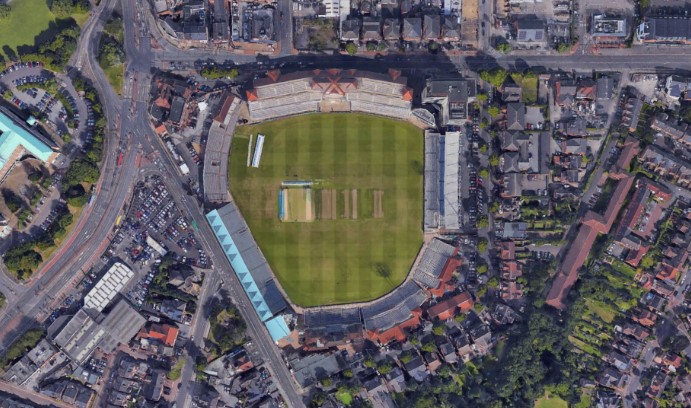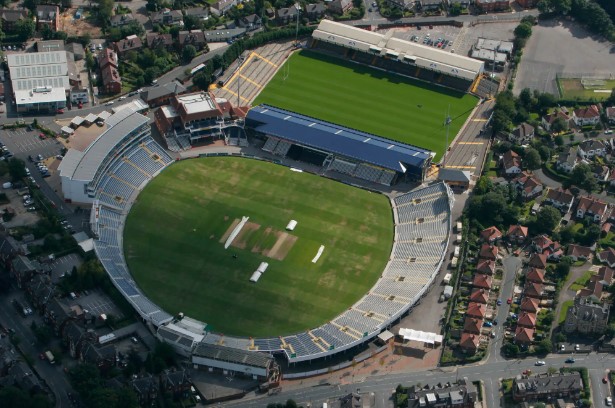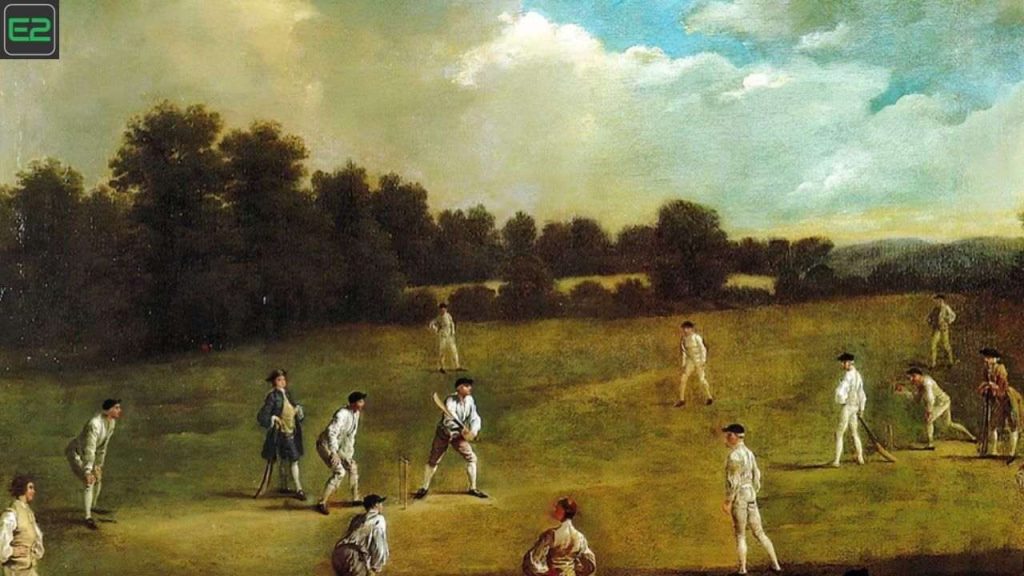England: Cricket, often regarded as the gentleman’s game, is one of the most celebrated sports in the world, and its appeal extends far beyond national borders. England, with its rich cricketing history and tradition, is home to several iconic cricket grounds that have hosted some of the most memorable moments in the sport’s history. The size of the cricket ground, particularly the boundary length, plays a pivotal role in shaping the dynamics of the game. A larger boundary often results in greater challenges for batsmen and bowlers alike, while a shorter boundary can encourage aggressive and high-scoring cricket.
In this article, we explore the biggest cricket ground in England by boundary length, examine the dimensions of various cricket grounds across the country, and discuss the influence of boundary sizes on the game of cricket. We’ll also take a detailed look at the factors that determine boundary lengths and how they contribute to the strategic decisions in matches.

Understanding Boundary Length in Cricket
In cricket, the boundary refers to the outer perimeter of the playing field, beyond which the ball crosses to score runs. The distance from the center of the pitch to the boundary line is known as the boundary length. This length varies across different grounds, influencing how matches are played and how players approach batting, bowling, and fielding. A shorter boundary can make the game more exciting, especially in limited-overs formats, as it encourages batsmen to go for big shots. Conversely, longer boundaries present more challenges, requiring more power and precision to clear the ropes.
The International Cricket Council (ICC) has set certain standards for boundary lengths, with the minimum requirement for international matches being 55 meters. However, the maximum boundary length can vary, and some of England’s iconic grounds feature much longer boundary lengths that significantly affect the match conditions.
The Biggest Cricket Ground by Boundary Length in England
England boasts a diverse range of cricket grounds, each with its unique characteristics. Some grounds are known for their historical significance, while others are famous for their playing conditions. When it comes to boundary length, one particular ground stands out as the biggest in England.
Lord’s Cricket Ground, London
Lord’s Cricket Ground, located in the heart of London, is often referred to as the “Home of Cricket.” It is one of the oldest and most prestigious cricket grounds in the world. In terms of boundary length, Lord’s is the largest cricket ground in England.

Lord’s Boundary Length
- Straight Boundaries: 70 meters
- Square Boundaries: 75 meters
- Max Boundary Length: 75 meters (approximately)
Lord’s is known for its expansive dimensions, making it one of the largest cricket grounds in terms of boundary length in the country. The ground has a rich history, having hosted numerous historical Test matches, one-day internationals, and World Cup games. The relatively long boundaries at Lord’s, especially the square boundaries, challenge batsmen to hit with power and precision to clear the ropes.
Other Prominent Cricket Grounds in England and Their Boundary Lengths
In addition to Lord’s, several other cricket grounds in England have notable boundary lengths. These grounds vary in terms of size, and the boundary distances often depend on the shape and design of the ground. Here’s a look at some of the most significant cricket grounds in England and their boundary lengths:
| Stadium | City | Straight Boundary (Meters) | Square Boundary (Meters) | Max Boundary Length (Meters) | Shape |
|---|---|---|---|---|---|
| Lord’s Cricket Ground | London | 70 meters | 75 meters | 75 meters | Oval |
| Old Trafford Cricket Ground | Manchester | 70 meters | 80 meters | 80 meters | Oval |
| Edgbaston Cricket Ground | Birmingham | 65 meters | 75 meters | 75 meters | Oval |
| Headingley Cricket Ground | Leeds | 66 meters | 75 meters | 75 meters | Oval |
| The Oval Cricket Ground | London | 65 meters | 70 meters | 70 meters | Oval |
| Trent Bridge | Nottingham | 65 meters | 70 meters | 70 meters | Oval |
| Durham County Cricket Ground | Chester-le-Street | 65 meters | 70 meters | 70 meters | Oval |
| Cardiff’s Sophia Gardens | Cardiff, Wales | 60 meters | 70 meters | 70 meters | Oval |
| Bristol County Ground | Bristol | 60 meters | 70 meters | 70 meters | Oval |
| Hove County Ground | Hove, Sussex | 60 meters | 70 meters | 70 meters | Oval |
Key Grounds and Their Features

Lord’s Cricket Ground (London): Lord’s is not only the largest cricket ground by boundary length in England but also the most prestigious. As the oldest professional cricket ground in the world, it has hosted numerous high-profile matches, including five ICC Cricket World Cup finals. The boundary length of 75 meters makes it a challenging venue for batsmen, requiring them to clear a considerable distance to hit a boundary, especially on the square side of the ground.
Old Trafford Cricket Ground (Manchester): Old Trafford is another notable cricket ground with a maximum boundary length of 80 meters. Located in Manchester, this historic venue is home to the Lancashire County Cricket Club. The ground has hosted many international matches, including the Ashes series. The boundary dimensions of Old Trafford make it one of the largest grounds in England, challenging batsmen to play intelligently and avoid hitting the ball directly to the fielders positioned near the boundary.
Edgbaston Cricket Ground (Birmingham): Edgbaston is another prominent venue with boundary lengths measuring up to 75 meters. Known for its passionate crowd and thrilling cricketing encounters, Edgbaston has witnessed several iconic moments in international cricket. With a boundary length of 75 meters on the square, the ground offers a balanced challenge to batsmen and bowlers alike, making it one of the most exciting grounds in the country.
Headingley Cricket Ground (Leeds): Headingley, located in Leeds, is known for its historic matches, particularly the 2005 Ashes Test match. The boundary length here ranges up to 75 meters on the square side. Headingley’s compact design provides an exciting atmosphere for fans and players, with a boundary that encourages aggressive batting while offering bowlers a fair chance to make an impact.
The Oval Cricket Ground (London): The Oval is one of the most iconic cricket grounds in London, with a boundary length of approximately 70 meters on the square side. The ground has hosted numerous Test matches and One-Day Internationals, including the final of the 2009 ICC Champions Trophy. The Oval’s boundary dimensions ensure a competitive balance between bat and ball, with batsmen needing to time their shots perfectly to clear the ropes.
Trent Bridge (Nottingham): Trent Bridge is known for its lively pitch conditions, making it an exciting venue for fast bowlers. The boundary length here is around 70 meters, providing enough space for batsmen to showcase their aggressive play. Trent Bridge has witnessed many memorable moments in England’s home series, and the boundary length adds to the excitement of these encounters.
Durham County Cricket Ground (Chester-le-Street): Durham’s home ground has boundary dimensions that range up to 70 meters. The venue is a relatively newer addition to England’s major cricket grounds, but it has already become a staple for international and county matches. The ground’s expansive boundary gives players the chance to play their natural game while providing a significant challenge to those attempting big shots.
Sophia Gardens, Cardiff: Sophia Gardens, located in Cardiff, Wales, has hosted many significant international matches, including ICC tournaments. The boundary length here reaches up to 70 meters, providing a balanced challenge for batsmen and bowlers. Its boundary dimensions contribute to the competitive nature of games played here, particularly in the ICC Champions Trophy and ICC World Cup.
Bristol County Ground (Bristol): Bristol is another notable ground with boundary dimensions of 70 meters. Situated in the city of Bristol, it is known for hosting exciting, high-scoring matches, especially in limited-overs formats. The boundaries here offer a perfect mix of challenge and opportunity for the batsmen to entertain the crowd.
Hove County Ground (Sussex): Hove’s County Ground is a picturesque venue with boundaries measuring up to 70 meters. It has hosted several international matches and county games, with the boundary length making it an exciting location for fast-paced cricket.

Factors Influencing Boundary Lengths
Several factors influence the boundary length of cricket grounds in England, including the stadium design, geographic location, and overall layout. The shape of the ground (whether oval or circular) plays a significant role in determining how far the boundary lies in different directions. Additionally, the size of the stadium and its history often dictate its boundary length, with larger and more historic grounds typically featuring longer boundaries.
The boundary length of a cricket ground plays a crucial role in shaping the dynamics of the game. In England, venues like Lord’s and Old Trafford are renowned for their expansive boundaries, offering a challenging environment for batsmen. These long boundaries not only affect batting strategies but also create an exciting and competitive atmosphere for fans.
As England continues to host international cricket matches, the boundary lengths of its iconic grounds will remain a key factor in influencing the outcome of games, particularly in formats like T20 and ODIs, where boundaries can change the course of a match in an instant. Whether it’s a historic Test match at Lord’s or an exhilarating IPL clash at Edgbaston, the boundary length will always be a factor in determining how the game unfolds.














